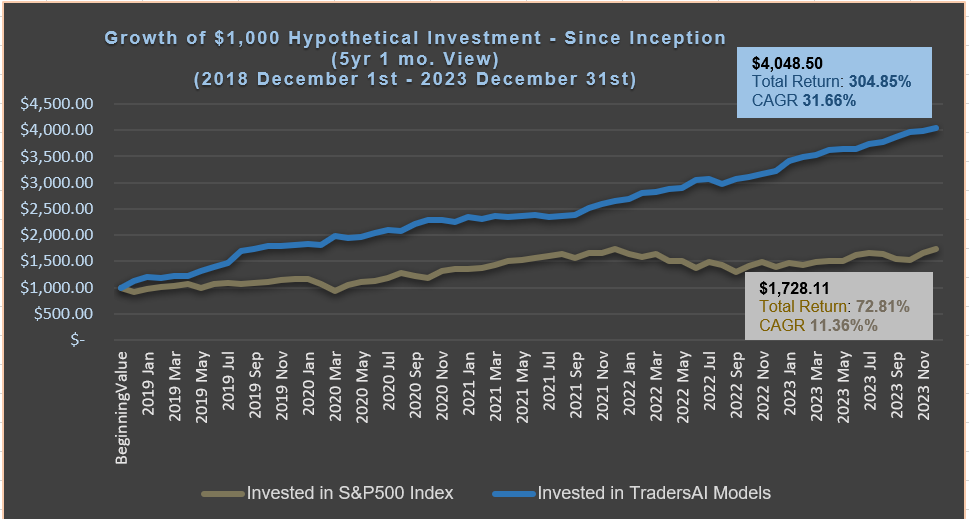Results of Published Model Trades for TUE 07/30
Find below the detailed outcome tracking of our models’ trading plans for the day, as well as the results for the last month.
THE GIST:
Medium-Frequency Models: Lead to +6.19 index points in gains on one long.
Aggressive, Intraday Models: Lead to –13.00 index points in losses on five longs and five shorts.
THE DETAILS:
NOTE: The index by itself is NOT tradable. The model plans here based on the S&P index level can be used to trade any instrument that tracks the index – the futures on the index (ES, ES-mini), the options on the futures (ES options), the SPX options, the ETF SPY are just a few examples of the instruments one can adapt these plans to.
The trades given below are not reflective of or indicative of any specific outcomes for any specific individual – your exact results would vary widely, depending on the time frame you use – tick chart, 1-min chart, 5-min chart, 15-min chart etc, as well as the quality of the execution of your broker, the stop levels you use based on your risk tolerance and your trading style.
These plans and results are hypothetical and NOT an investment advice to buy or sell any specific securities but are intended to aid – as informational, educational, and research tools – in arriving at your own investment/trading decisions. Please read the full disclosures at the bottom of this article for additional notes and disclaimers..
Medium-Frequency Models – Trading Plan Outcomes/Results:
The index broke above the 3005 level around 9:35am ET, triggering a long position with a 6-point trailing stop. The long rode to the session of 3017.19 reached around 2:20pm, lifting the 6-point trailing stop to 3011.19. This stop was hit around 3:20pm, closing the long with a gain of 6.19 index points. The models stayed flat for the rest of the session.

Note: For the trades to trigger, the breaks should occur during the regular session hours starting at 9:30am ET. By design, these models do NOT open any new positions after 3:45pm. Only one open position at any given time.
Aggressive Intraday Models – Trading Plan Outcomes/Results:
The index broke below the 3003.00 level and back above the 3005.00 level within the first five minutes of the session, opening and closing a short with a loss of 2.00 index points, and then opening a long.
The index crossed below the 3010 level around 10:00am, closing the long with a gain of 5.00 index points and opening a short(#2).
This short was closed within a couple of minutes, with a loss of 2.00 when the index broke above the 3012 level, and simultaneously a long(#2) was opened.
The index broke below the 3010 level around 10:10am, closing the long with a loss of 2.00 index points and opening a short(#3).
The index broke above the 3012 level around 11:00am, closing the short with a loss of 2.00 index points and opening a long(#3).
The index broke below the 3010 level around 11:50am, closing the long with a loss of 2.00 index points and opening a short(#4).
The index broke above the 3012 level around 12:15pm, closing the short with a loss of 2.00 index points and opening a long(#4).
The index broke below the 3010 level around 12:55pm, closing the long with a loss of 2.00 index points and opening a short(#5).
The index broke above the 3012 level around 1:50pm, closing the short with a loss of 2.00 index points and opening a long(#5).
The index broke below the 3010 level around 3:45pm, closing the long with a loss of 2.00 index points. The models stayed flat for the rest of the session, following the intraday mandate.
Thus, the aggressive intraday models’ trades lead to a loss of -13.00 (-2.00 +5.00 -2.00 -2.00 -2.00 -2.00 -2.00 -2.00 -2.00 -2.00) index points on ten trades today.

Note: For the trades to trigger, the breaks should occur during regular session hours starting at 9:30am ET. Due to the intraday nature of these aggressive models, they indicate closing any open trades at 3:55pm and remaining flat into the session close. No opening of new positions after 3:45pm. Only one open position at any given time.
NOTE: Remember that a “trailing stop” works differently from the traditional stop-loss order. Please bear in mind that the trailing stop’s trigger level would keep changing throughout the session (click here to read on the conceptual workings of a trailing-stop).
IMPORTANT RISK DISCLOSURES AND NOTICES – READ CAREFULLY:
(i) This article contains personal opinions of the author and is NOT representative of any organization(s) he may be affiliated with. This article is solely intended for informational and educational purposes only. It is NOT any specific advice or recommendation or solicitation to purchase or sell or cause any transaction in any specific investment instruments at any specific price levels, but it is a generic analysis of the instruments mentioned.
(ii) Do NOT make your financial investment or trading decisions based on this article; anyone doing so shall do so solely at their own risk. The author will NOT be responsible for any losses or loss of potential gains arising from any investments/trades made based on the opinions, forecasts or other information contained in this article.
(iii) Risk Warning: Investing, trading in S&P 500 Index – spot, futures, or options or in any other synthetic form – or its component stocks carries inherent risk of loss. Trading in leveraged instruments such as futures carries much higher risk of significant losses and you may lose more than you invested in them. Carefully consider your individual financial situation and investment objectives before investing in any financial instruments. If you are not a professional trader, consult a professional investment advisor before making your investment decisions.
(iv) Past performance: This article may contain references to past performance of hypothetical trades or past forecasts, which should NOT be taken as any representation or promise or guarantee of potential future profits. Past performance is not indicative of future performance.
(v) The author makes no representations whatsoever and assumes no responsibility as to the suitability, accuracy, completeness or validity of the information or the forecasts provided.
(vi) All opinions expressed herein are subject to change at any time, without any notice to anyone.





